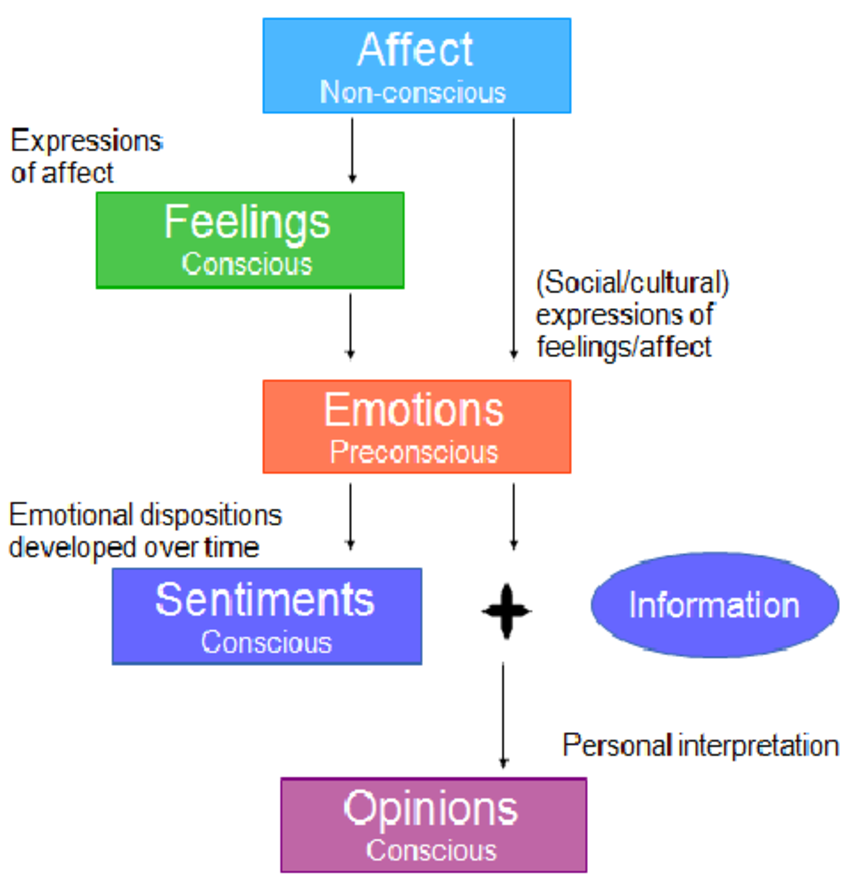In April 2014, my colleagues and I published an article in the IEEE Transactions on Affective Computing journal titled “Are They Different? Affect, Feeling, Emotion, Sentiment, and Opinion Detection in Text.” In writing the paper, I didn’t know that it was going to end up being one of one my most read and cited paper.
The paper made a case that the following five subjective terms should be differentiated for their effective detection in text: affect, emotion, feeling, sentiment, and opinion. In the field of subjective detection, a major limitation in the automatic detection of affect, feelings, emotions, sentiments, and opinions in text is the lack of proper differentiation between these subjective terms and understanding of how they relate to one another. This lack of differentiation, also influences real-world text analysis applications.
In the paper, I tried to bring clarification to the terms and highlight the distinctions and relationship between them, first at a definition level, and then at a more structural level so as to allow for the detection of those terms in text. The definitions and structural differences that were identified are summarized below.
Affect is non-conscious and is difficult to conceptualize in language, revealing that what can be detected from text is the conscious expression of affect, which was found to be feelings and emotions. What is normally or can be detected in text is rather the affective reaction expressed towards something.
Feelings are conscious phenomena that have been labeled and they can be detected from text.
Emotions are complex psychological phenomena that are near impossible to detect in totality from text. What we are able to detect is the written conscious experience of five factors (appraisals, feelings, physiological reactions, expressive behavior, and readiness to act in a certain way), which constitute emotions. I also found that the use of words to convey emotions is influenced by culture. Thus the paper further recommend the inclusion of ethnographic studies to answer questions such as “What role does culture play in the linguistic expression of emotions?” Answering that would enable natural language processing researchers to create more robust emotion detection algorithms.

Sentiments are enduring emotional dispositions that have developed over time about particular objects. Conclusions about sentiments in text have to be performed for a period.

Opinions are personal interpretations of information, which may or may not be associated with an emotion or sentiment. The paper gives examples of such instances.

From the definitions and structures above, it is clear to see the differences between the subjective terms. The terms are however related to each other as the figure below illustrates.

In summary, to reach their full potential, natural language processing techniques focused on detecting subjective terms must be able to capture the subtle differences that reflect personal, cultural, and societal signals within the subjectivity terms. In the paper, I only focused on five terms, but there exists others that are related such as mood and attitude.
The existence of these related concepts is one of the reasons I did this research. In particular, I wanted to use the results as building blocks for building a common framework for capturing all the subjectivity terms in text. This is something I still have the desire to do and something that is still an open question on whether its possible or even needed. Perhaps, the current advances in word embedding techniques would be one approach to capture not only the semantic relations but the affective relations between words, sentences, or documents. Thus if there are any interests out there on investigating this common framework for detecting subjectivity in text, please drop me a line.
Also published on Medium.
